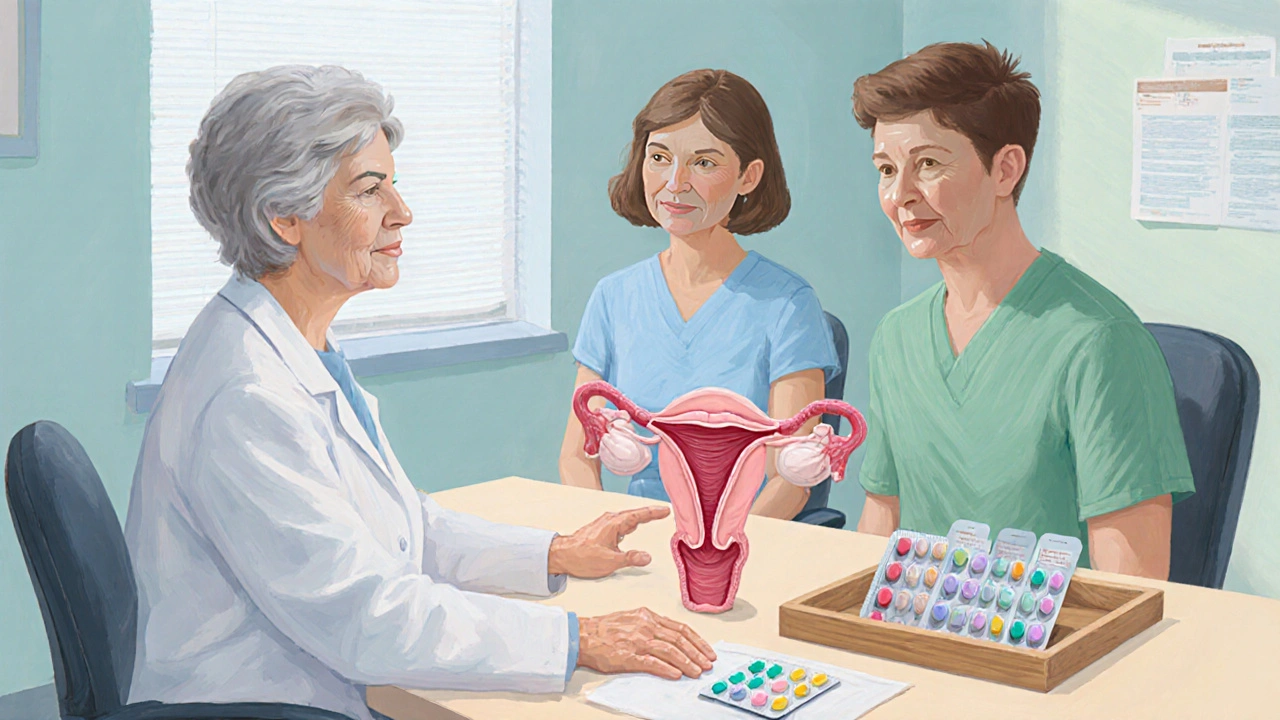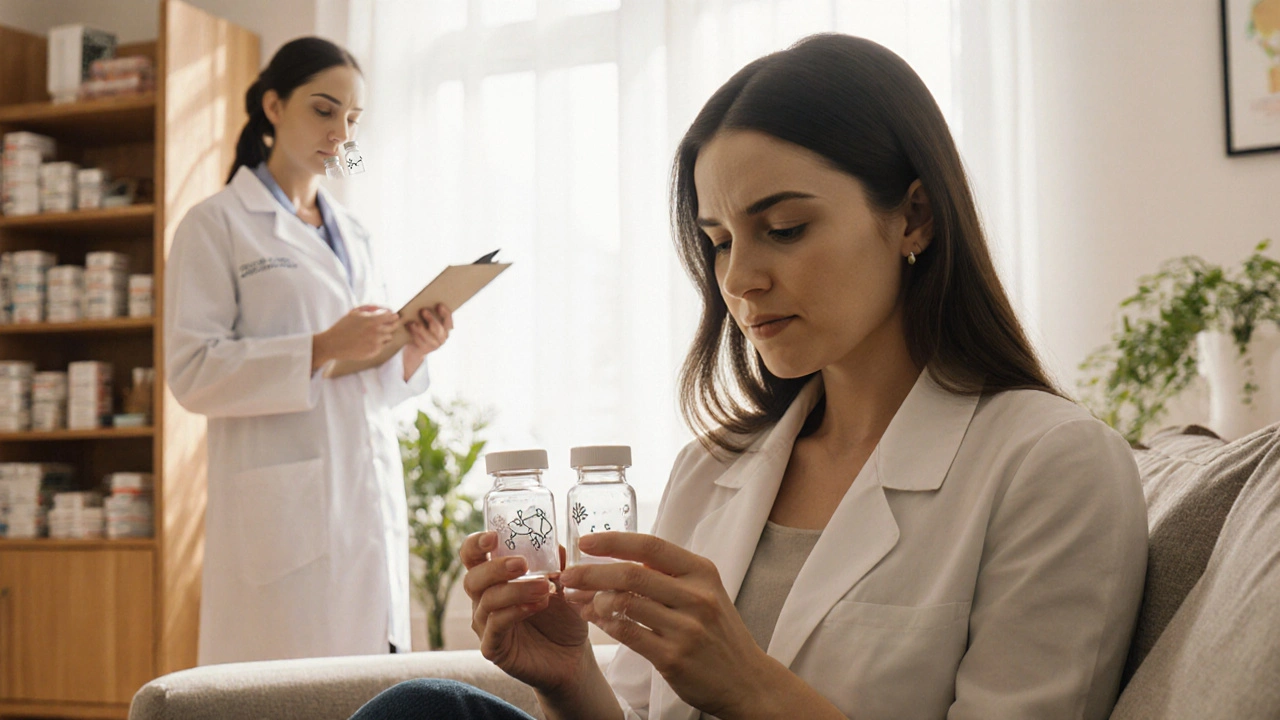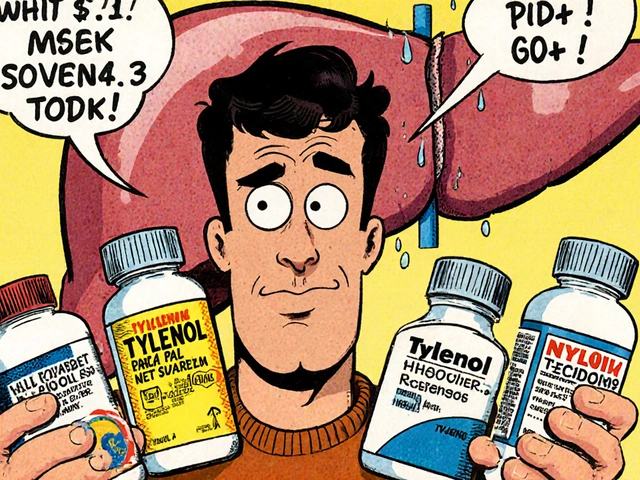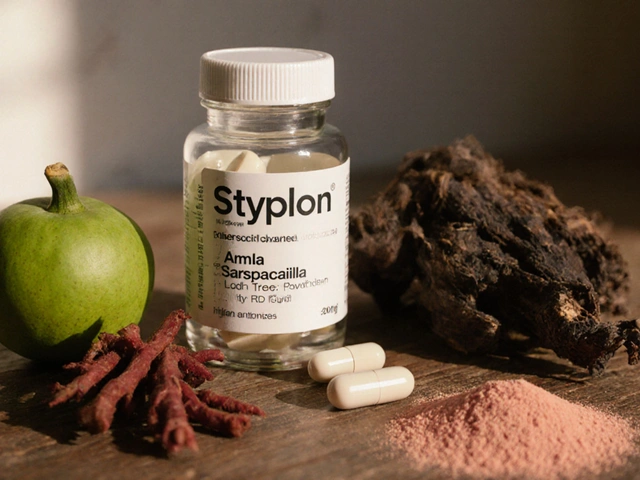Progestin Comparison Tool
Select a progestin to compare key characteristics:
| Attribute | Value |
|---|---|
| Active Ingredient | - |
| Form | - |
| Typical Indication | - |
| Half-Life | - |
| Oral Bioavailability | - |
Quick Take
- Duphaston contains dydrogesterone, a synthetic progesterone with a high receptor‑selectivity.
- Micronized progesterone (e.g., Prometrium) mimics natural hormone but is less potent per milligram.
- Medroxyprogesterone acetate (MPA) is a strong progestin used in contraception and endometrial protection.
- Norethisterone acetate (NETA) works well for menstrual‑cycle control but can cause more androgenic side‑effects.
- Choosing the right option depends on indication, route, side‑effect profile, and personal preferences.
What Is Duphaston?
Duphaston is a brand‑name medication that contains dydrogesterone, a synthetic progestogen designed to closely resemble the activity of natural progesterone. It comes as 10mg tablets and is prescribed for conditions such as luteal‑phase insufficiency, endometriosis, and menstrual‑cycle regulation. The drug was first approved in Europe in the early 1970s and quickly became a go‑to option because of its good oral bioavailability (≈60%) and a relatively short half‑life of 5‑7hours.
How Does Dydrogesterone Work?
Dydrogesterone binds selectively to progesterone receptors (PR‑A and PR‑B) without activating androgen or glucocorticoid receptors. This selectivity translates into fewer side‑effects like acne, hirsutism, or fluid retention compared with some older progestins. In the luteal phase, it stabilises the endometrium, supports implantation, and reduces the risk of early miscarriage. Because it doesn’t convert to estrogen, it’s often paired with estradiol in hormone‑replacement therapy for menopausal women.
Main Alternatives at a Glance
Below are the most common progestin alternatives you’ll encounter in clinical practice.
- Micronized progesterone is a bio‑identical form of progesterone derived from plant sterols. It’s sold under brand names such as Prometrium (oral capsule) or Utrogestan (oral). It’s often chosen for infertility protocols and menopausal hormone therapy because it mirrors the body’s own hormone.
- Medroxyprogesterone acetate (MPA) is a synthetic progestin used in the injectable form Depo‑Provera and the oral tablet Provera. It’s powerful for endometrial protection in estrogen therapy and for long‑acting contraception.
- Norethisterone acetate (NETA) is an oral progestin commonly marketed as Aygestin. It’s effective for treating heavy menstrual bleeding and for delaying periods before travel.
- Estradiol/dydrogesterone combination (e.g., Femoston) pairs oral estradiol with dydrogesterone for menopausal hormone therapy, offering a balanced estrogen‑progestin regimen.
- Vaginal progesterone gel (brand Crinone) delivers progesterone directly to the uterus, useful in assisted reproductive technology (ART) cycles.
- Drospirenone is a newer progestin found in many combined oral contraceptives (e.g., Yaz). It has anti‑aldosterone activity, which can reduce water retention.
- Herbal progesterone extracts such as wild‑yam or chaste‑berry are marketed as “natural” supplements. Clinical evidence is limited, and they are not regulated as pharmaceuticals.

Detailed Comparison Table
| Brand/Generic | Active Ingredient | Form | Typical Indication | Half‑life | Oral Bioavailability |
|---|---|---|---|---|---|
| Duphaston | Dydrogesterone | 10mg tablet | Luteal‑phase support, endometriosis | 5‑7h | ≈60% |
| Prometrium / Utrogestan | Micronized progesterone | 100‑200mg capsule | Menopause HRT, infertility | 20‑30h | ≈13% |
| Depo‑Provera / Provera | Medroxyprogesterone acetate | Injection (150mg) or 10mg tablet | Contraception, endometrial protection | ~25h (oral), 30‑45d (injectable) | ≈70% |
| Aygestin | Norethisterone acetate | 5mg tablet | Heavy bleeding, cycle delay | ~16h | ≈60% |
| Femoston | Estradiol + Dydrogesterone | Combined tablet | Menopausal hormone therapy | Varies (estradiol ~12h, dydrogesterone ~6h) | ~70% overall |
| Crinone | Progesterone (bio‑identical) | Vaginal gel 90mg | Luteal support in ART | ~5h (local) | Not applicable (local delivery) |
Choosing the Right Progestin: Factors to Consider
When you sit down with a clinician, a few practical questions shape the decision.
- Indication. Are you treating a menstrual‑cycle disorder, supporting early pregnancy, or managing menopausal symptoms? Some progestins are better suited for specific scenarios (e.g., vaginal gel for IVF).
- Route of administration. Oral tablets are convenient, but first‑pass metabolism can lower efficacy for some compounds. Vaginal or injectable routes bypass the liver and may provide steadier serum levels.
- Side‑effect profile. Dydrogesterone (Duphaston) is low‑androgenic, making it a good pick for women sensitive to acne or hair growth. MPA can raise LDL cholesterol, while NETA may cause mood swings.
- Drug interactions. Enzyme inducers like rifampin lower oral progesterone bioavailability, while CYP3A4 inhibitors (ketoconazole) raise levels, potentially increasing side‑effects.
- Cost and insurance coverage. Generic dydrogesterone is often pricier than micronized progesterone capsules, but some health plans cover the latter more readily.
Balancing these factors with personal preferences (e.g., willingness to take a weekly injection) leads to a tailored regimen.
Practical Tips & Safety Notes
Regardless of the chosen progestin, keep these basics in mind.
- Take oral tablets at the same time each day to maintain steady levels.
- If you experience severe headache, visual disturbances, or sudden swelling, seek medical attention-these can signal rare thrombotic events.
- Women with a history of breast cancer should discuss the risk‑benefit ratio, as some progestins have stronger proliferative effects on breast tissue.
- Pregnant women using progestins for luteal support should follow dosing instructions closely; overtreatment can lead to ovarian cysts.
- Never combine over‑the‑counter herbal progesterone supplements with prescription progestins without doctor guidance; you may inadvertently double‑dose.
Monitoring hormone levels isn’t routine for most patients, but if you’re in a fertility program, serial progesterone assays can help adjust dosing.
Related Topics to Explore Next
If you found this comparison useful, you might also want to read about:
- How to manage perimenopausal symptoms with combined hormone therapy.
- The role of progesterone in preventing miscarriage.
- Understanding the endocrine effects of combined oral contraceptives.
- Natural versus synthetic progestins: myths vs. evidence.
Frequently Asked Questions
Can I switch from Duphaston to micronized progesterone?
Yes, but you’ll need a doctor’s guidance. Micronized progesterone is less potent per milligram, so the dose usually increases (e.g., 10mg dydrogesterone ≈ 200mg micronized progesterone). Monitoring for breakthrough bleeding is recommended during the transition.
Is Duphaston safe during pregnancy?
Duphaston is often prescribed for luteal‑phase support in early pregnancy and has a good safety record. However, it’s not intended for long‑term use throughout the entire pregnancy unless specifically advised.
What are the most common side‑effects of medroxyprogesterone acetate?
MPA can cause weight gain, mood changes, decreased libido, and, in some cases, elevated blood pressure. The injectable form may lead to injection‑site pain or irregular spotting.
Why does norethisterone sometimes cause acne?
Norethisterone has mild androgenic activity, which can increase sebum production and trigger acne, especially in women already prone to hormonal breakouts.
Are herbal progesterone supplements effective?
Evidence is limited. Wild‑yam and chaste‑berry contain phyto‑progestins, but their potency is far lower than prescription agents, and the supplements are not regulated for consistency.







Roger Cole
September 26, 2025 AT 23:06Duphaston’s selective receptor profile makes it a solid choice for luteal‑phase support.
Krishna Garimella
October 5, 2025 AT 02:53When you compare progestins it’s like weighing the philosophical scales of hormone harmony. Dydrogesterone offers a clean, receptor‑focused action, while micronized progesterone mirrors the body’s own molecule. The trade‑off often lands on bioavailability versus naturalness. For a woman chasing both efficacy and a low side‑effect profile, Duphaston can feel like a balanced middle path. Yet, each individual’s endocrine landscape writes its own story.
nalina Rajkumar
October 13, 2025 AT 06:40👍 Duphaston works fast 🚀 low androgenic side effects 🙌 easy to swallow 😎
Inma Sims
October 21, 2025 AT 10:28Ah, the joys of choosing a progestin that apparently costs as much as a small vacation. One would think the pharmaceutical industry would prioritize patient access over designer pricing, but alas, here we are, weighing efficacy against a spreadsheet. Still, if you enjoy the thrill of hunting for insurance pre‑approval, Duphaston might just be your next hobby.
Gavin Potenza
October 29, 2025 AT 13:15Historically, progestins have been the unsung heroes of reproductive medicine, stepping in where nature’s own progesterone can’t quite fill the gaps. Dydrogesterone, the active ingredient in Duphaston, was born out of a quest for a more selective agent, and it’s interesting to see how that selectivity translates into fewer androgenic hiccups. At the same time, the older stalwarts like medroxyprogesterone acetate still hold sway in contraception circles. It’s a bit like comparing a classic novel to a modern thriller – both have merit, but the taste differs.
Tiffany Clarke
November 6, 2025 AT 17:02Duphaston feels ok but the side effects can be a drag you know it’s weird
Mariah Dietzler
November 14, 2025 AT 20:50i guess duphaston is fine lol
Nicola Strand
November 23, 2025 AT 00:37While the original poster extols Dydrogesterone’s selectivity, it is worth noting that the comparative data with micronized progesterone remains inconclusive, particularly regarding long‑term endometrial safety. One cannot simply dismiss the documented androgenic activity of norethisterone as negligible without rigorous meta‑analysis. Therefore, the claim of superiority should be tempered with scientific caution.
Robert Jackson
December 1, 2025 AT 04:24Let us be perfectly clear: the pharmacokinetic superiority of Dydrogesterone is documented in peer‑reviewed journals, with a half‑life of 5‑7 hours and an oral bioavailability of approximately 60 %, surpassing micronized progesterone’s meager 13 %. Any suggestion that the older medroxyprogesterone acetate is comparable in safety is simply erroneous. Clinicians must prescribe Duphaston when a high‑selectivity progestin is indicated, especially in luteal‑phase support, to avoid the androgenic side‑effects that plague other agents.
Robert Hunter
December 9, 2025 AT 08:12From a cultural perspective, many women across the globe still rely on injectable medroxyprogesterone acetate due to accessibility and cost‑effectiveness, even if the side‑effect profile is less favorable. It’s a reminder that the “best” progestin isn’t universal; it depends on healthcare infrastructure, insurance coverage, and patient preference. Duphaston may be ideal where it’s affordable, but we must respect the realities of diverse populations.
Shruti Agrawal
December 17, 2025 AT 11:59Great summary on the half‑life differences and the importance of oral bioavailability
Katey Nelson
December 25, 2025 AT 15:47Okay so here is the thing :) Duphaston is like that reliable friend you call when you need help with a project 🙃 It does its job in the luteal phase without making you break out or feel bloated 🔥 The tablet is easy to swallow and you don’t have to worry about the messy injections that come with Depo‑Provera 🙏 On the other hand, micronized progesterone is more natural but you need a higher dose which can be a hassle 😅 Also, the injectable MPA gives you a super long half‑life, so you forget about dosing for weeks but you might get weight gain 😬 In short pick what fits your lifestyle and side‑effect tolerance 🙂
joni darmawan
January 2, 2026 AT 19:34In evaluating the therapeutic landscape, one must consider not only the pharmacodynamic nuances but also the patient’s lived experience. Dydrogesterone’s selective affinity for progesterone receptors offers an elegant solution for luteal insufficiency, yet the psychosocial context, such as anxiety over hormonal fluctuations, remains paramount. Thus, the clinician’s role extends beyond the prescription pad.